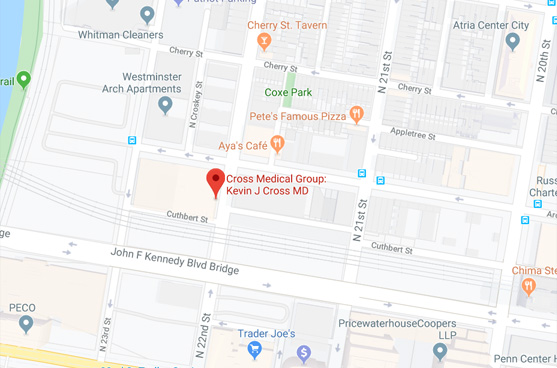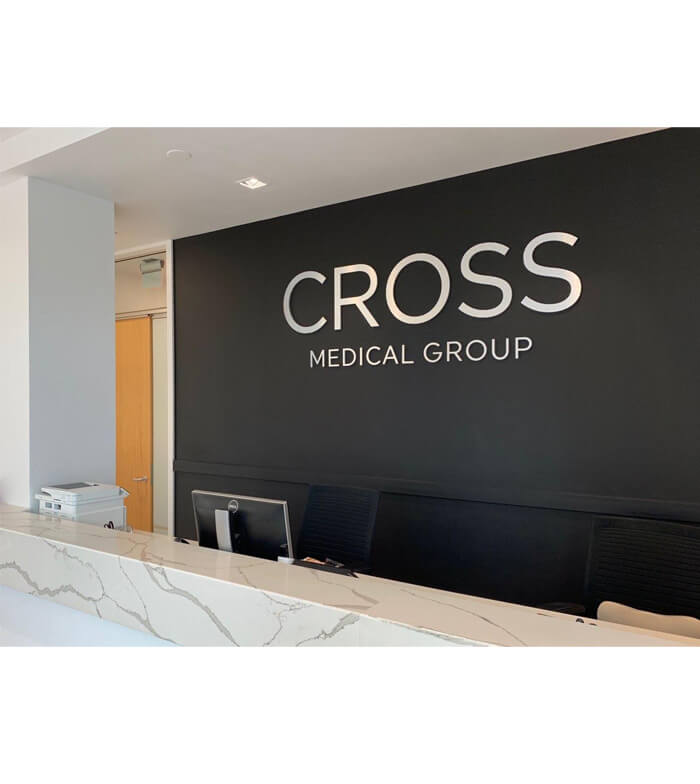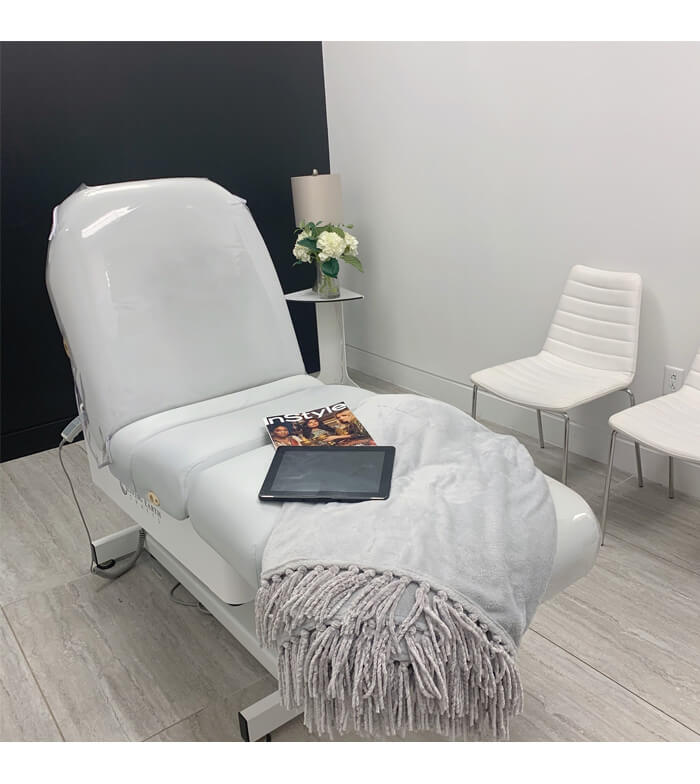FOLLICULAR UNIT EXCISION
TRANSFORM YOUR HAIRLINE WITH MODERN FUE HAIR TRANSPLANT SURGERY
CONTENTS
UNDERSTANDING FOLLICULAR UNIT EXCISION
BENEFITS OF FOLLICULAR UNIT EXCISION (FUE) HAIR TRANSPLANTS
FOLLICULAR UNIT EXCISION PROCEDURE DETAILS
CANDIDATES FOR FOLLICULAR UNIT EXCISION
Hair loss can result from genetics, hormonal changes, aging, or medical conditions. For individuals struggling with hair thinning or baldness, follicular unit excision (FUE) at Philadelphia and Villanova's Cross Medical Group provides a minimally invasive hair transplant solution with natural-looking outcomes.
FUE is a precise surgical technique that enhances hair density by relocating healthy follicles from denser regions of the scalp to areas affected by hair loss. Patients researching hair restoration methods often compare FUE to alternatives such as strip harvesting (FUT). At Cross Medical Group, we offer a tailored approach to determine whether follicular unit excision is the ideal option based on your pattern of hair loss, scalp condition, and cosmetic goals.
UNDERSTANDING FOLLICULAR UNIT EXCISION
Follicular unit excision is one of the two primary techniques used in hair transplant surgery, alongside strip harvesting, also known as follicular unit transplantation (FUT). This method continues to be among the most effective and widely preferred options for restoring hair in areas of thinning or baldness.
The procedure involves harvesting individual follicular units—natural groupings of one to four hairs—from the back or sides of the scalp and implanting them into areas where hair is sparse or absent. While most commonly used to restore scalp hair, follicular unit excision can also be applied to other areas of the body, including the beard, eyebrows, and chest.
Hair follicles grow in naturally irregular groupings, not in uniform patterns. Follicular unit excision replicates this pattern by strategically placing viable follicles into recipient areas to replace those that no longer produce hair. The objective is to increase density in targeted areas while preserving a natural look and seamless hairline.
Achieving natural-looking results requires attention to direction, angle, and spacing during graft placement. The precision and expertise involved in follicular unit excision allow for subtle yet significant improvement in hair coverage and appearance.
GET STARTED TODAY
Restore thicker, natural-looking hair with follicular unit excision in Philadelphia or Villanova at Cross Medical Group. Call us or fill out our contact form to schedule your personalized hair transplant consultation in Philadelphia (215-561-9100) or Villanova (610-688-9100) today.
BENEFITS OF FOLLICULAR UNIT EXCISION (FUE) HAIR TRANSPLANTS
FUE offers numerous advantages, making it a popular choice among patients seeking hair restoration:
- Minimal visible scarring at the donor site
- Shorter recovery time and less post-operative discomfort
- Natural-looking and long-lasting results
- Suitable for patients who prefer short hairstyles
- Can be used to correct previous hair transplant procedures
As follicular unit excision involves removing individual grafts, patients benefit from a refined, customized outcome with improved hairline aesthetics.
In comparison to strip harvesting, follicular unit excision is far less likely to produce noticeable scarring at the donor site. The tiny holes that are created to remove the follicular units are not visible once the area has healed. Healing time and discomfort are typically less than that associated with strip harvesting.
NATURAL-LOOKING RESULTS FROM FOLLICULAR UNIT EXCISION
One of the most valued benefits of follicular unit excision is its ability to deliver natural-looking results that blend seamlessly with the patient’s existing hair. This technique enables surgeons to mimic the natural growth pattern, density, and direction of hair, ensuring that the transplanted follicles are indistinguishable from the surrounding hair once fully healed.
The individualized harvesting and placement of each follicular unit play a key role in creating subtle and aesthetically pleasing results. Hairline design is customized for each patient, taking into account facial structure, hair type, and the natural distribution of follicles. This personalized approach prevents the uniform, unnatural appearance that can result from older or less advanced hair transplant methods.
Cross Medical Group prioritizes artistry and technical precision throughout the follicular unit excision process. The angle, spacing, and depth of each graft are carefully calibrated to replicate natural growth patterns. As a result, patients benefit from restored hair density without visible signs of surgery.
These refined follicular unit excision techniques not only improve cosmetic outcomes but also enhance confidence and satisfaction for patients seeking a discreet and lasting solution to hair loss.
CHALLENGES ASSOCIATED WITH FOLLICULAR UNIT EXCISION
The donor area must be shaved short to facilitate precise harvesting, which some patients may find challenging. However, strategic hair styling before and after the follicular unit excision procedure can help minimize its visibility. Additionally, because each follicle is removed individually during follicular unit excision, the harvesting process typically requires more time.
FOLLICULAR UNIT EXCISION PROCEDURE DETAILS
Proper preparation is essential for achieving optimal outcomes with follicular unit excision. Before undergoing this advanced hair transplant procedure, patients are guided through a comprehensive pre-treatment process to ensure they are medically and physically ready for surgery.
In the days leading up to the follicular unit excision procedure, patients may be advised to avoid certain medications or supplements that could increase the risk of bleeding. Alcohol consumption and smoking should also be discontinued, as both can interfere with healing and graft survival. It is important to follow all pre-operative instructions provided by the Cross Medical Group team to promote a smooth surgical experience.
As mentioned above, to facilitate accurate harvesting for follicular unit excision, the donor area—typically located at the back or sides of the scalp—will need to be trimmed short. Patients should plan accordingly and may want to consult with a stylist beforehand to blend the shorter area into their existing hairstyle. On the day of th e follicular unit excision, patients should arrive with clean hair, free of styling products or oils, to allow for proper visualization and access during the procedure.
Preparing both mentally and physically for follicular unit ex cision contributes to the success of the surgery and the longevity of results. The team at Cross Medical Group provides personalized guidance throughout the preparation process to ensure patients feel confident and informed every step of the way.
At Cross Medical Group, follicular unit excision is performed using advanced tools and refined techniques to maximize precision and patient comfort. This method—also known as follicular unit excision—involves the individual removal of healthy hair follicles, rather than excising a strip of scalp. Patients remain comfortably positioned in a specially designed surgical chair while follicular unit excision is carried out using a state-of-the-art handheld device, ensuring the collection of strong, viable grafts. The harvesting phase typically lasts two to three hours.
Once follicles are removed, our experienced team carefully prepares each graft for placement. Cross Medical Group oversees every stage of the follicular unit excision process, from harvesting to transplantation, to maintain the highest standards of quality and consistency. The meticulous placement of grafts is what enables seamless blending with the patient’s existing hair, resulting in a natural-looking hairline and overall aesthetic.
Following transplantation, the relocated follicles are supported by new blood supply and begin producing hair over time. Because individual units are removed and placed with precision, there are virtually no visible signs left behind from the follicular unit ex cision procedure.
Though labor-intensive, follicular unit excision is generally pain-free once local anesthesia is administered. Every measure is taken to ensure patient comfort throughout the experience.
Although it is a labor-intensive process, follicular unit excision usually won’t cause any pain during the procedure itself after local anesthesia takes effect. Care is taken to make the procedure as comfortable as possible for each patient.
Recovery after follicular unit excision is generally smooth and well tolerated. Thanks to modern techniques and tools, patients experience less discomfort and downtime than with traditional hair transplant procedures. Follicular unit excision side effects such as mild bruising, swelling, or sensitivity are minimal and often resolve within a few days. Tiny white scars may form where hairs are harvested, but these are typically concealed by surrounding hair and appear as small dots if the scalp is shaved.
Most follicular unit excision patients are able to return to light activities within a day or two and resume full physical activity in about a week. Scabbing may occur in both the donor and recipient areas, and some patients may prefer to take a few days off work while the scalp heals. Swelling can occasionally affect the forehead and eye area, but it subsides quickly with proper care.
Strict adherence to aftercare instructions plays a key role in achieving optimal recovery. Avoiding strenuous exercise and protecting the scalp from trauma will help minimize complications. Compared to strip harvesting, follicular unit excision is associated with a shorter, more comfortable healing phase and a discreet appearance.
Hair regrowth typically begins at three to four months following the procedure. Final results, characterized by natural density and coverage, are usually visible within nine to 12 months. The high satisfaction rate among follicular unit excision patients reflects the technique’s consistent and lasting aesthetic benefits.
Long-term success with follicular unit excision depends not only on the skill of the surgical procedure but also on how well patients care for their hair post-treatment. Proper maintenance helps to preserve the density and appearance of the newly transplanted hair while supporting overall scalp health.
Following follicular unit excision, patients should adhere closely to the post-operative care guidelines provided by Cross Medical Group. These include avoiding sun exposure, refraining from scratching or rubbing the scalp, and using only approved shampoos and hair care products during the initial healing phase. Gentle handling of the scalp is essential in the first weeks after surgery to avoid dislodging the newly implanted grafts.
In the months that follow, maintaining a consistent scalp hygiene routine and minimizing heat or chemical exposure to the hair can help preserve the integrity of the transplanted follicles. Periodic check-ins with the surgical team allow for ongoing evaluation and support, ensuring optimal growth and long-term success.
Patients who undergo follicular unit excision may also benefit from adjunctive treatments such as non-surgical solutions and medications to enhance follicle health and prolong the life of their results. With proper care and routine maintenance, the outcomes of follicular unit excision can remain natural and long-lasting.
CANDIDATES FOR FOLLICULAR UNIT EXCISION
Patients experiencing noticeable hair thinning or baldness may benefit significantly from surgical hair restoration. Follicular unit excision (FUE) offers a refined approach for restoring natural hair growth, particularly for individuals with pattern baldness who still retain a healthy supply of donor hair at the back or sides of the scalp.
Candidacy for FUE depends on several factors, including overall health, the availability of viable donor follicles, and appropriate expectations regarding results. This technique is particularly beneficial for those prone to visible or keloid scarring, as it avoids the linear scar associated with strip harvesting (FUT). Individuals who prefer short hairstyles often choose FUE for its discreet healing pattern and minimal scarring.
The FUE process involves the precise removal of follicular units from the donor region using specialized micro-instruments. These units are carefully implanted into thinning or bald areas, producing a fuller and more natural-looking hairline. As with all procedures at Cross Medical Group, recommendations are customized based on individual goals, scalp characteristics, and the long-term viability of results.
ADDITIONAL HAIR RESTORATION OPTIONS
Aside from follicular unit excision, Cross Medical Group also offers strip harvesting (FUT) and non-surgical treatments for hair restoration, such as exosome therapy, medications and topical treatments, low-level laser therapy, and collagen induction therapy. The most suitable hair restoration approach depends on individual goals and needs.
BOOK NOW
Find out if follicular unit excision (FUE) at Philadelphia and Villanova’s Cross Medical Group is the best hair transplant method for your needs. Call our Philadelphia office at (215-561-9100) or Villanova office at (610-688-9100) or fill out our contact form to schedule your personalized consultation.








